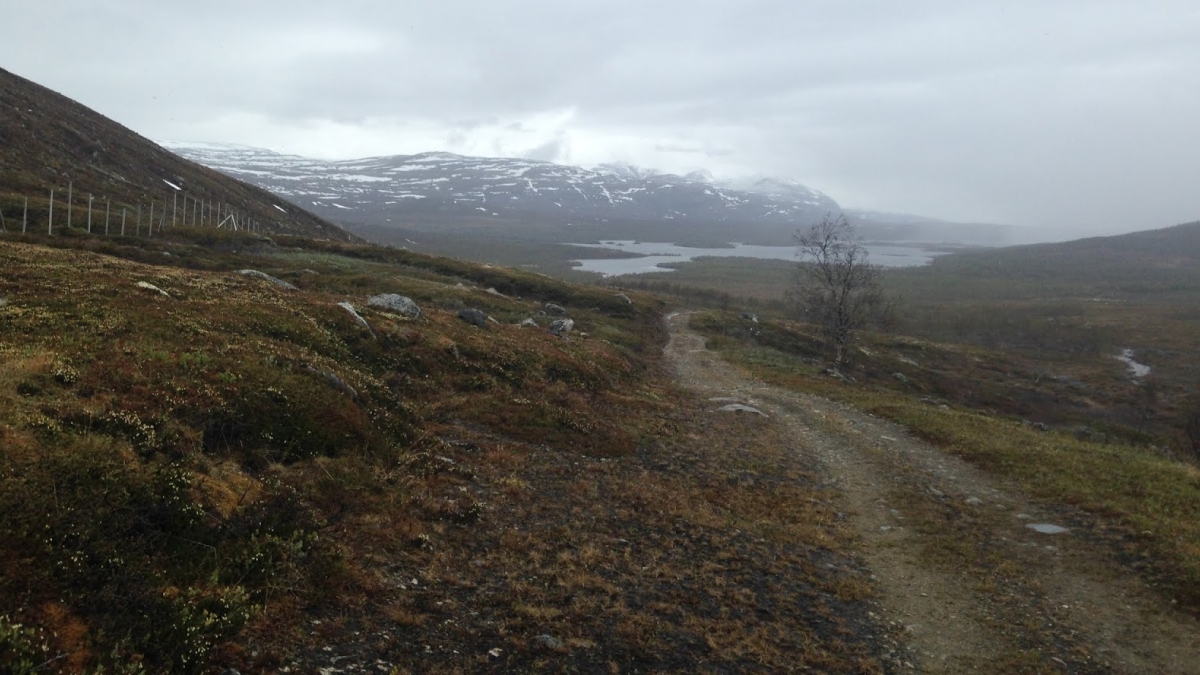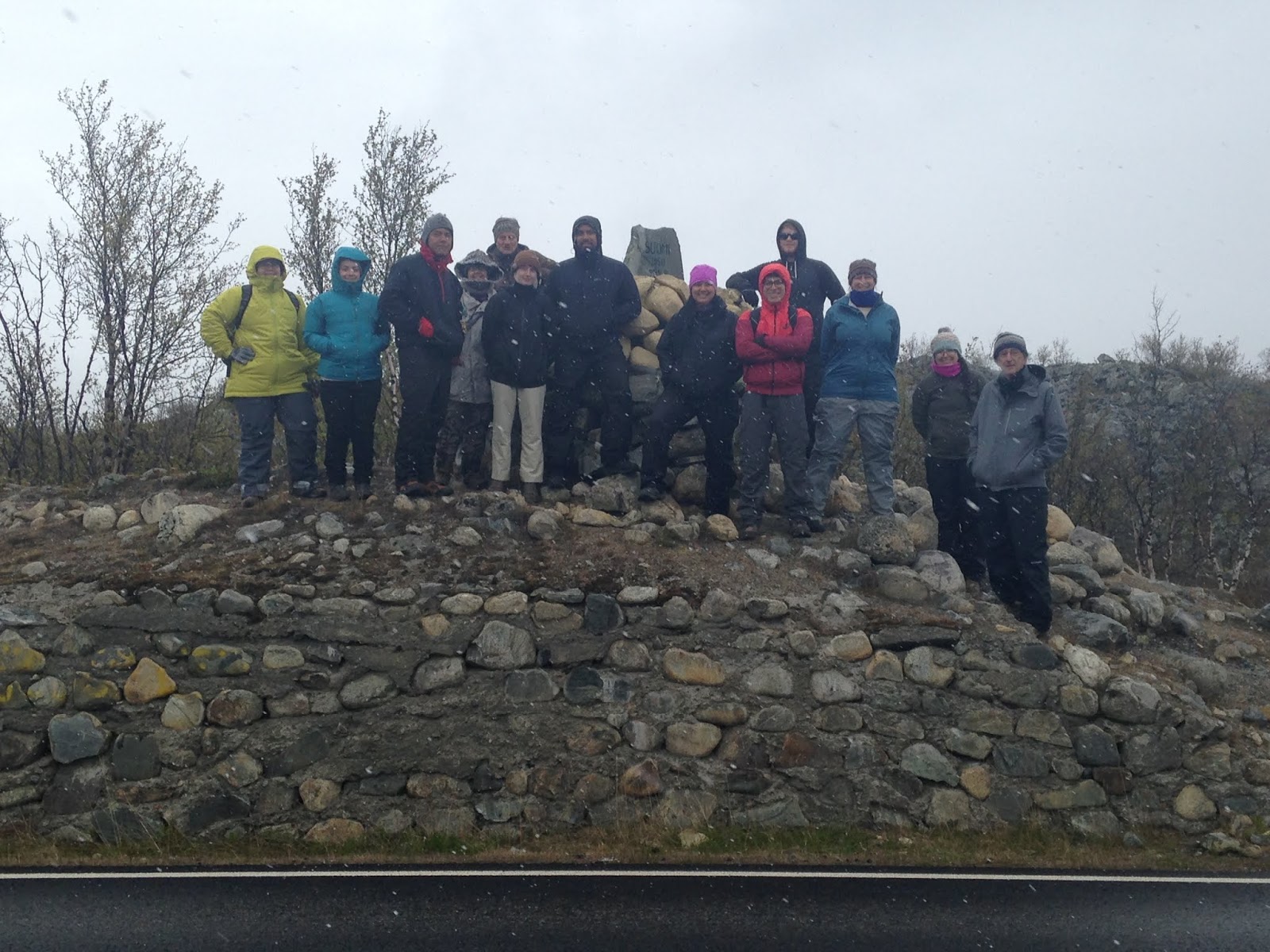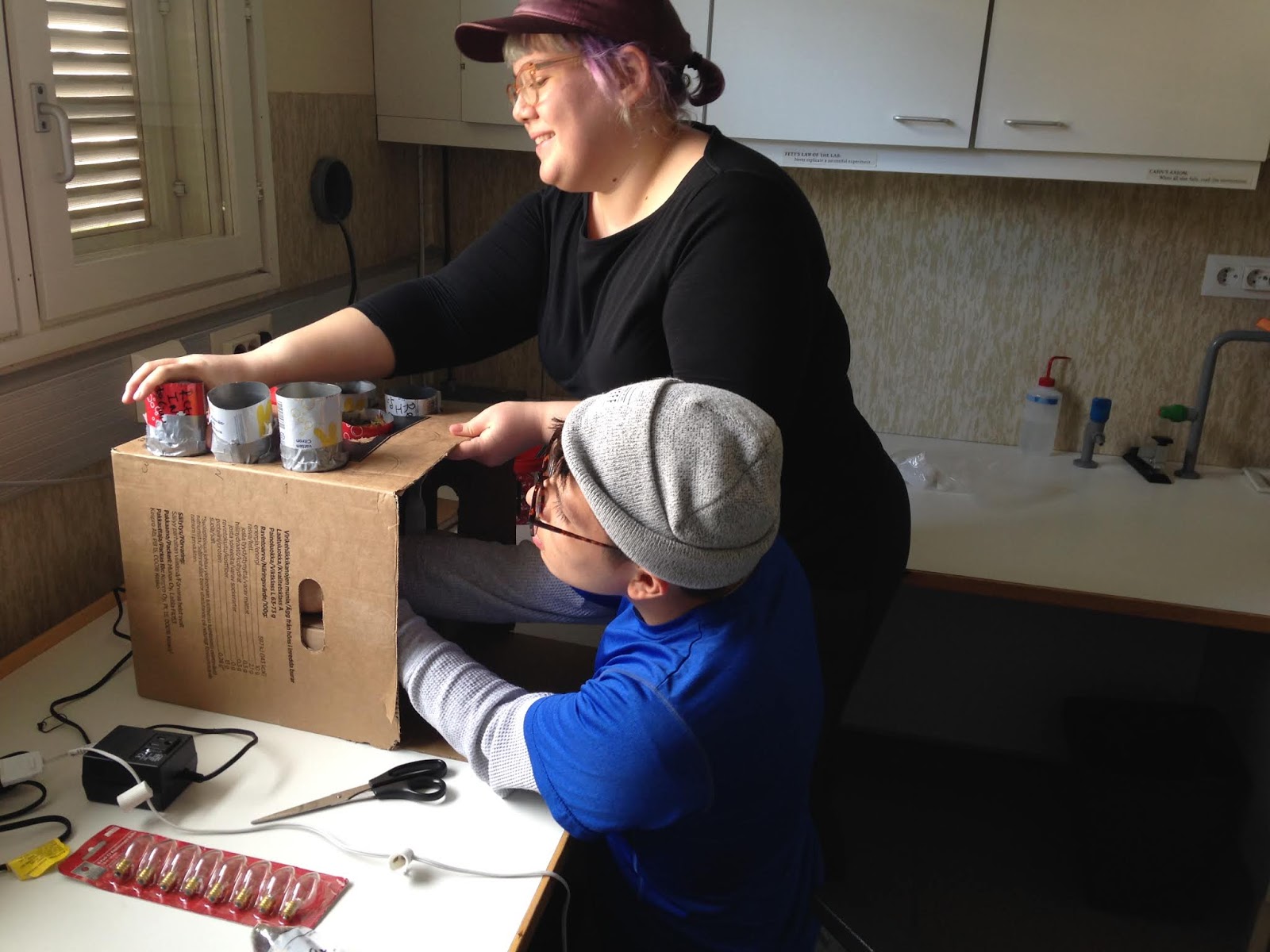Cardboard, soda cans, cheesecloth, Christmas lights, duct tape.
Ingredients for a DIY craft project? How about a clever use of otherwise mundane items to test a scientific theory?
Arizona State University students Guillermo Ortiz and Tiffany Gibbs used the assortment for the latter while participating in a study-abroad trip to northern Finland this summer, turning the objects into a makeshift Tullgren funnelA Tullgren funnel is an apparatus used to extract living organisms, particularly arthropods, from samples of soil. to extract microarthropods from samples of Arctic soil in order to better understand how their soil habitat changes with elevation. Later, they used the soil from which the organisms were extracted to create clay representations of them, rescuing the microscopic creatures from myopic obscurity so that one might observe them with the naked eye.
The pair’s decidedly meta experiment was part of a new course offered through the New College of Interdisciplinary Arts and Sciences and supported by a grant from the National Science Foundation. BioArt: Sonoran and Arctic Environments, co-taught by Professors Becky Ball, a soil biogeochemist, and Richard Lerman, a sound artist, seeks to increase scientific literacy by providing an opportunity for undergraduates to engage in independent research and communicate it to a wide audience.
The students and faculty of BioArt: Sonoran and Arctic Environments keep bundled up on their excursion to Finland. Photo by Becky Ball
The reason to value scientific literacy is pretty straightforward, according to Ball: “So that you don’t get hoodwinked.”
She’s concerned that American culture has become too accepting of the notion that some people “just don’t get science,” and the ramifications of that thinking.
“If you don’t know how your body works, for example, which is biology, how do you understand what your doctor is telling you? How do you know that you’re getting good advice? How do you vote for politicians based on their science policy if you don’t understand the science?” Ball asked.
And at a time when the internet is the leading source of information, how do you know that Facebook meme isn’t misrepresenting data to serve a particular agenda?
“It makes you very susceptible to believing whatever you’re told, without being able to know whether it’s credible or not,” Ball said. “[Scientific literacy] is incredibly important to being an informed and functional citizen.”
The idea for the BioArt course took root during Lerman’s 2014 residency at the Kilpisjarvi biological research station above the Arctic circle run by the University of Helsinki, in Finland.
An audiophile since childhood, Lerman has been making his own microphones for more than 30 years and attaching them to rocks, trees, credit cards and more to study the sound of various materials. While in Finland, he thought to capture the sound of the environment by placing thin, carbon fiber rods into the snow and ice, then recording the audio emitted through them.
“For me, this is an image of climate change,” Lerman said of the resulting recordings, which at different points sound like anything from a creaking ship to silverware scraping a plate.
Guillermo Ortiz and Tiffany Gibbs make the Tullgren funnels while on their study-abroad program, which blended artistic and scientific pursuits. Photo by Becky Ball
Inspired by the outcome of his unorthodox experiment and enthused by the transdisciplinary conversation it sparked between the artists and scientists at the university, he sought a way to bring similar experiences to his students.
Back at ASU, Lerman recruited Ball, who had plenty of experience working in frigid climates, having carried out much of her soil work in Antarctica, and the two conceived of a course that would bring together science and art students to conduct research and communicate their findings.
“Everyone thinks they’re very different,” Ball said. “That artists are just these flighty people and that scientists are just these boring analytical people, and that if you do art, you can’t do science and vice versa, when in reality they use the same skill sets.”
Scientists, she pointed out, have to be creative in formulating new concepts and theories to test, and artists have to observe, analyze and interpret. The course, Ball and Lerman feel, is a way to teach students that not only can they be all of those things, regardless of their field, but that it’s actually advantageous.
During the first two weeks of the course, the class met at the West campus, where they were introduced to the basics of both science and art, as far as techniques and approaches. Some days students ventured into the Sonoran desert to get experience surveying ecosystems. Then it was off to Finland for two and a half weeks, where they worked in artist-scientist pairs on a variety of projects, from how reindeer diets might change with global warming, to the effects of human activity on bird behavior, to how phytoplankton responds to temperature change.
Ortiz, who hopes to study the effects of human activity on climate change and how to mitigate them, said one of the benefits of working with an artist was being able to consider the subject from a different perspective, which increased his own understanding of the subject.
“Prior to this experience, I had a lot of trouble with identifying microarthropods because I would have trouble paying attention to the details in the morphology of the microarthropod,” he said. “However, working with Tiffany on the art portion has really improved my ability … because of our attention to detail when we designed the microarthropods out of clay.
“Using art to convey science not only allowed for a powerful way to present our work, but our collaboration amongst disciplines improved our creativity and meticulousness within our respective focus.”
As for Gibbs, before BioArt, she had only ever taken one science course, because it was required. Now, she said she would consider taking more.
“I love to experiment and try new things, and I definitely learned more about science from this experience,” she said.
The art pieces that resulted from the student collaborations will be on display at ArtSpace West during the fall semester, beginning in September.
A nontraveling version of BioArt will be offered in spring 2019, and another traveling version will be offered over the summer.
Learn more about the 250-plus study-abroad programs in more than 65 different countries offered at ASU. Visit the Study Abroad Expo from 11 a.m. to 2 p.m. Aug. 22, in the Ventana Ballroom of the Memorial Union to learn more about programs and scholarships.
Top photo: A view of the landscape around the Kilpisjarvi biological research station. Photo by Becky Ball
More Science and technology

Science meets play: ASU researcher makes developmental science hands-on for families
On a Friday morning at the Edna Vihel Arts Center in Tempe, toddlers dip paint brushes into bright colors, decorating paper fish. Nearby, children chase bubbles and move to music, while…

ASU water polo player defends the goal — and our data
Marie Rudasics is the last line of defense.Six players advance across the pool with a single objective in mind: making sure that yellow hydrogrip ball finds its way into the net. Rudasics, goalkeeper…

Diagnosing data corruption
You are in your doctor’s office for your annual physical and you notice the change. This year, your doctor no longer has your health history in five-inch stack of paperwork fastened together with…




